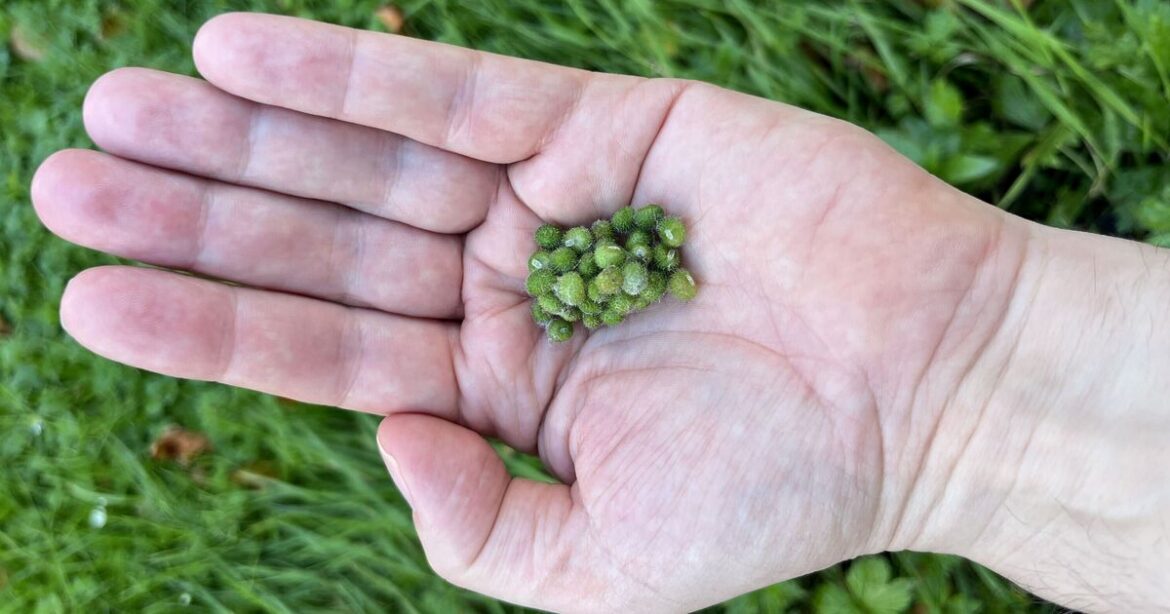It’s extremely unlikely that WW3 will break out – but the chance is not zero. If the worst does happen in our lifetimes, though, there are ways to make ends meet when food supplies are likely to be scarce – by foraging in your own garden.
Back in World War Two, rationing hit the UK hard, limiting food supplies to make sure there was enough to go around, with key staples like eggs, butter and sugar all rationed for families until beyond the end of the conflict, while anyone with a garden was urged to ‘dig for victory’ and plant their own veg. With food supplies being so globally connected, any future conflict could strain food availability or prices, as already seen when the price of supermarket groceries spiked when Russia invaded Ukraine.
Of course, there doesn’t need to be a war on to make use of the natural foods growing in your garden, and you needn’t be a garden whiz to find something edible growing in your yard with zero effort.
With that in mind, there are several plants you can find and pick from your garden which can be turned into edible, nutritious free food. It never hurts to be prepared in any case.
First are dandelions. The controversial yellow weed is hated by some gardeners for popping up in lawns, driveways and patios without invitation, often crowding out grass. Dandelions are actually hugely beneficial to your garden because they help bees, wasps and moths pollinate and breed, but they have another benefit: they’re quite good to eat.
According to the Woodland Trust: “Its flowers are most widely used to make dandelion wine, but all parts of the plant are edible, both raw and cooked. Add the slightly bitter young leaves to salads, sandwiches or pies.
“Flowers can be used in many dishes from risotto to omelettes, for decoration and to make beer, wine and syrup. Unopened buds can be marinated and used like capers.
“Roots can also be thrown into stir-fries or added to vegetable dishes, or try making dandelion coffee by drying then grinding the roots.”
Another edible plant is the nettle. Nettle soup is already a delicacy in some parts of the UK, most recently being featured on Clarkson’s Farm 3.
The Woodland Trust says: “The leaves have a flavour similar to spinach. You can use nettle in the same way as spinach or to make tea, beer or soup (try creamy nettle and potato). Or try adding a handful of young nettle leaves to home-made pesto.”
Another edible weed is chickweed. These are identifiable by their small, white star shaped flowers.
The Woodland Trust adds: “Pick the young, fresh leaves as they are most tender. They can be added to salads with lemon and olive oil dressing. Blend into homemade pesto, or use to liven up fish or chicken.”
Goosegrass, otherwise known as Velcro plant, is also edible – both as a food and as a drink. Its leaves can be cooked as a green vegetable, while the seeds can be used as a substitute for coffee.
The Woodland Trust says about these: “If you’re going to eat this plant as a vegetable, pick the leaves and shoots when really young. Cook it as a green vegetable or add to soups, stews and pies.
“You can also eat the seeds (this plant is in the same family as coffee). Wait until they’ve hardened, then roast and grind as a coffee substitute.”
Finally, ground elder. This looks similar to mint leaves except they’re much bigger. It often forms thick carpets in shady spots.
The Woodland Trust says: “It’s a very versatile plant with a similar flavour to parsley that goes well with fish. Eat the young leaves and shoots raw or add to salads and sandwiches.
“You can cook the leaves in a similar way to spinach by steaming or softening in butter. Or add them to anything you’re making like soups, stews, bubble and squeak, and pasta dishes.”

